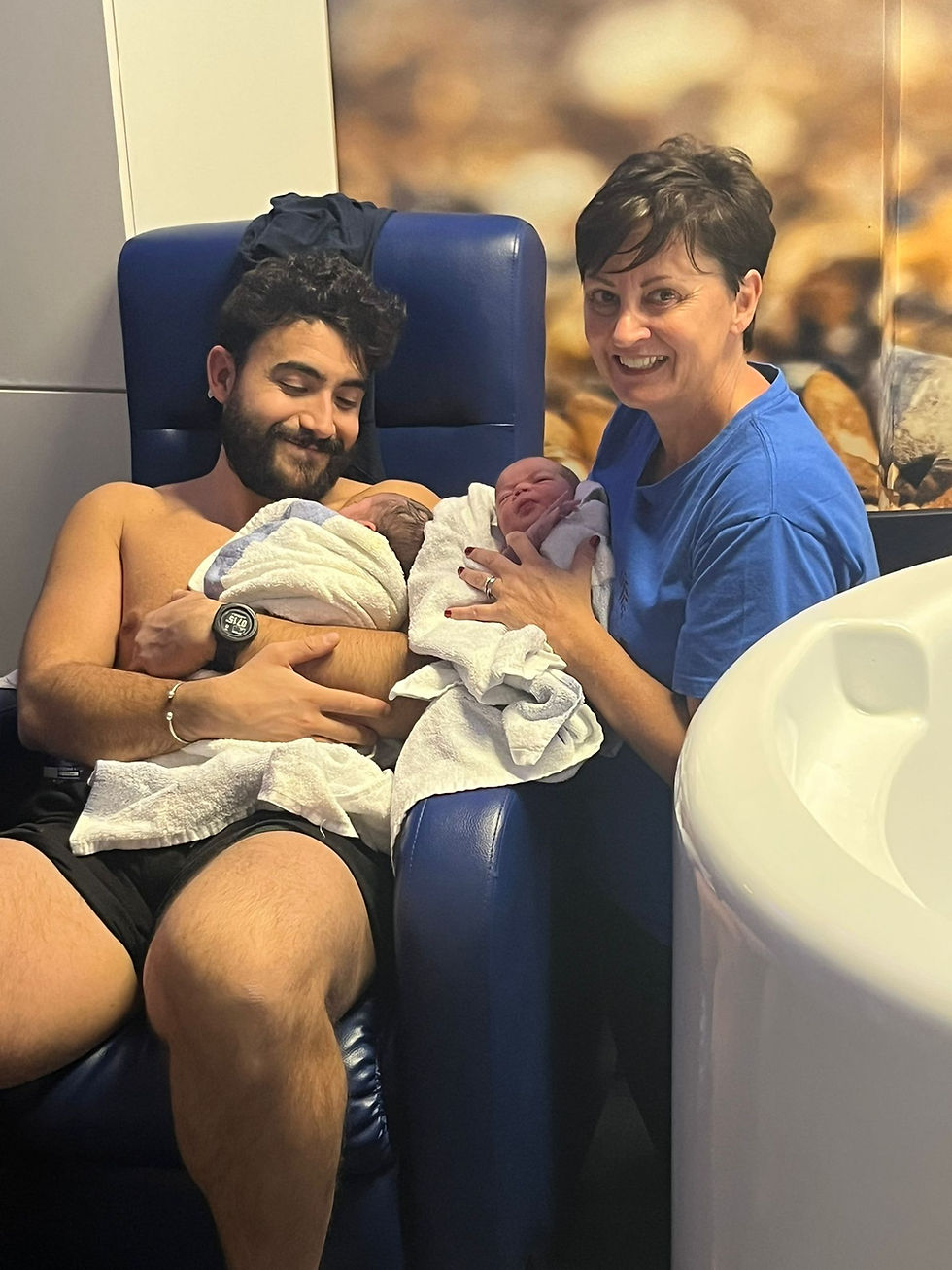Shoulder Dystocia
- Doula Tracy

- Feb 7, 2022
- 2 min read
Updated: Mar 2, 2022
What Is Shoulder Dystocia?
Once baby's head has been born the shoulder gets stuck. This occurs in 1/200 births.
Midwives and Obstetricians are trained to help the birthing woman adopt a position or use a manoeuvre to help baby out.

Is my baby at risk of Shoulder Dystocia?
If your baby is predicted to weigh 4kgs or more, (8lb 13oz), and are on the 90th percentile, (predicted to weigh more than 90% of other babies of the same gestation), you will be told your baby is Large for Gestational Dates, and at risk of Shoulder Dystocia. You will be offered an Induction, usually at 39 weeks.
But, here's the thing. Well nourished mums will grow well nourished, healthy babies. Big babies also run in families.
Many cases of Shoulder Dystocia occur in average sized babies or smaller than averaged sized babies.
Only 6% of babies over 4kg will have Shoulder Dystocia. (Beta et al, 2019.)
If you have poorly controlled diabetes, you are more at risk of having a baby with shoulder dystocia.
Is size prediction accurate?
In a word, No!
Using a tape measure to record your fundal height, (the top of your bump), usually performed by a different midwife each time, is up to 50% inaccurate! Factors such as your level of hydration, how full your bladder is, baby's position and how experienced the health care professional is, can all influence the measurement.
Ultrasound scans have been shown to have a margin of error of 15%. So, a predicted 4kg baby, (8lb 13oz), could weigh between 3.4kg, (7lb 5oz) and 4.6kg, (10lb 4oz).
One third of women are told they are having a big baby. In fact, the average weight of a baby in that group was 3590g or 7lb 13oz.
So, why is induction offered?
An induction is offered to prevent the possible complications of Shoulder Dystocia.
However, there is not enough evidence to suggest early induction improves outcomes.
In 2-16% of cases of Shoulder Dystocia, the baby will have damage to the nerves in their shoulder. Less than 10% of these babies will have an ongoing problem.
In 2% of cases of Shoulder Dystocia, baby will suffer a fractured collarbone. This sounds horrendous, but, the break heals quickly with usually no long term effect.
In very rare incidences, baby will receive a lack of oxygen and as a result sustain a brain injury or even die.
Hospitals and the medical staff fear being sued if something goes wrong. Therefore policies are put in place to reduce the likelihood of this happening. Unfortunately, there is an imbalance between the actual cases of Shoulder Dystocia, the number of cases of hospitals or Doctors being sued, and the actual total number of babies who have Shoulder Dystocia. Yet, the total number of women who are offered/have medical intervention because of this fear of being sued remains high.
Dr Sara Wickham's book; 'In Your Own Time', is a fabulous resource.
Dr Sara Wickham says, "No study has been able to accurately predict which babies will experience shoulder dystocia and no study has been able to predict which of the babies who experience shoulder dystocia will be negatively affected as a result."
Please get in touch if you would like to know more.



Comments